Luminous Mysteries in Art
Luminous Mysteries in Art
The Rosary and Art
Art has many facets and many ways to kindle our religious interest, deepen our understanding of God, and further our devotion. Art appeals to some, and challenges others. The same mysteries can be looked at differently, highlighting different aspects. This week's Rosary Markings are dealing with this issue. You will find two series of artistic representations for the Luminous Mysteries, one of them in the style of classical art (especially Renaissance and Baroque), the other illustrating the same mysteries with contemporary serigraphs by Washington Cloistered Dominican Sister Mary Grace Thul. At first glance, the rich color representations of Giotto, Raphael, and Fra Angelico seem hopelessly overpowering when compared to the humble depictions by Sr. Mary Grace. In fact, we need both the breathtaking beauty of "great art" and the contemplative simplicity of less elaborate art. One should lead to the other: may the opulent narrations of earlier periods show us the overflowing grace we have received in Christ's life and works. But let us also find the "simple way" of the five serigraphs leading forward to our daily life, and to make ours in prayer and good deeds what otherwise could be mere aesthetic enjoyment.
The following texts are from the Catechism of the Catholic Church and the paintings from the book The Rosary of Pope John Paul II: The 20 Mysteries, Libreria Editrice Vaticana, Vatican City: Vatican Press, 2002.
The Baptism of Christ in the Jordan
"Jesus' public life begins with his baptism by John in the Jordan. John preaches 'a baptism of repentance for the forgiveness of sins'." (Luke 3:3) (CCC, 535)
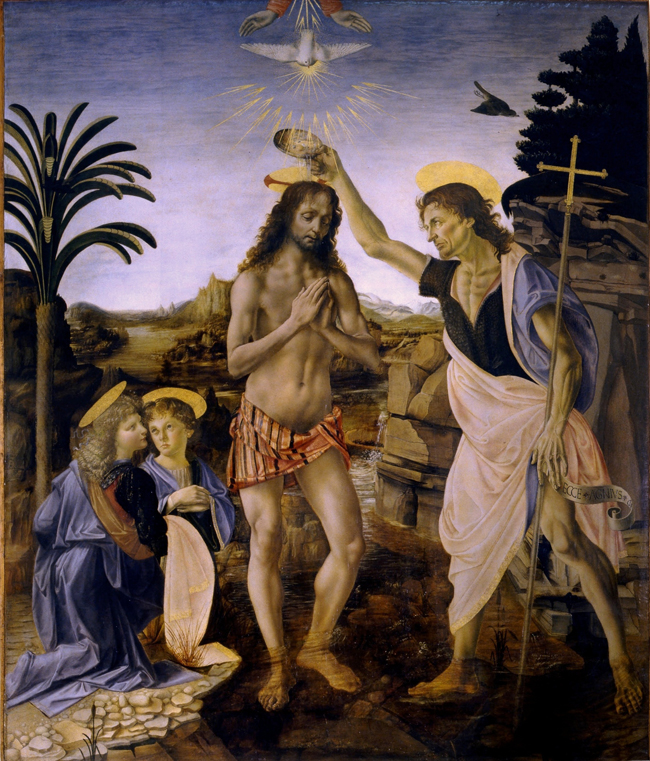
Artists: Andrea Verrocchio and Leonardo da Vinci, c. 1475
The Wedding Feast of Cana
"On the threshold of his public life Jesus performs his first sign, at his mother's request, during a wedding feast. The church attaches great importance to Jesus' presence at the wedding at Cana. She sees in it the confirmation of the goodness of marriage and the proclamation that henceforth marriage will be an efficacious sign of Christ's presence." (CCC, 1613)
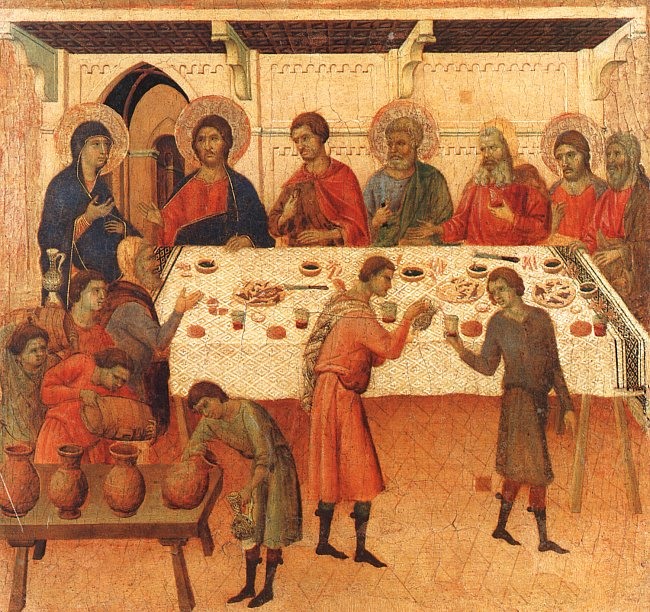
Artist: Duccio, 1308-11
The Proclamation of the Kingdom of God
"Everyone is called to enter the Kingdom. First announced to the children of Israel, this messianic kingdom is intended to accept men of all nations." (CCC, 543)
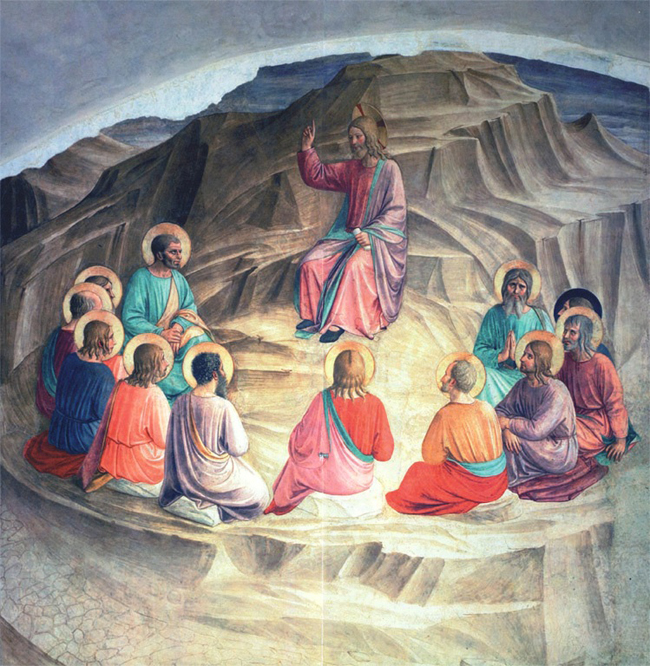
Artist: Blessed Fra Angelico, 1440-52
The Transfiguration
"For a moment Jesus discloses his divine glory, confirming Peter's confession. He also reveals that he will have to go by the way of the cross at Jerusalem in order to 'enter into his glory'." (Luke 24:26)(CCC, 555)
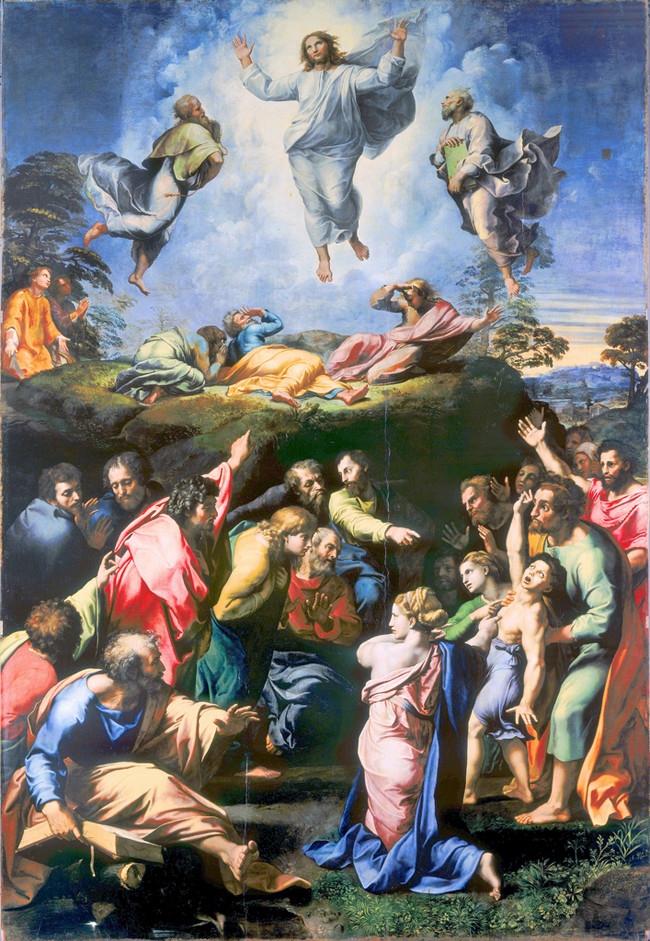
Artist: Raffaelo Sanzio, 1518-20
The Institution of the Eucharist
"By celebrating the Last Supper with his Apostles in the course of the Passover meal, Jesus gave the Jewish Passover its definitive meaning. Jesus' passing over to his Father by his Death and Resurrection, the new Passover, is anticipated in the Supper and celebrated in the Eucharist, which fulfills the Jewish Passover and anticipates the final Passover of the Church in the glory of the Kingdom." (CCC, 1340)
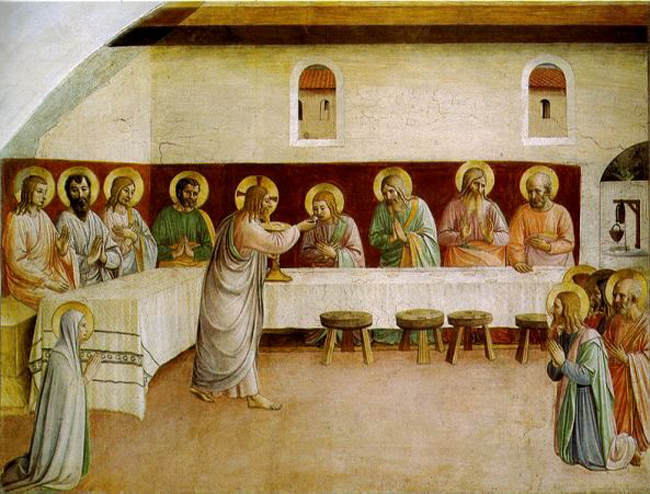
Artist: Blessed Fra Angelico and his school, 1438-42
In recognition of the Year of the Rosary, October 2002 – October 2003
All About Mary includes a variety of content, much of which reflects the expertise, interpretations and opinions of the individual authors and not necessarily of the Marian Library or the University of Dayton. Please share feedback or suggestions with marianlibrary@udayton.edu.
